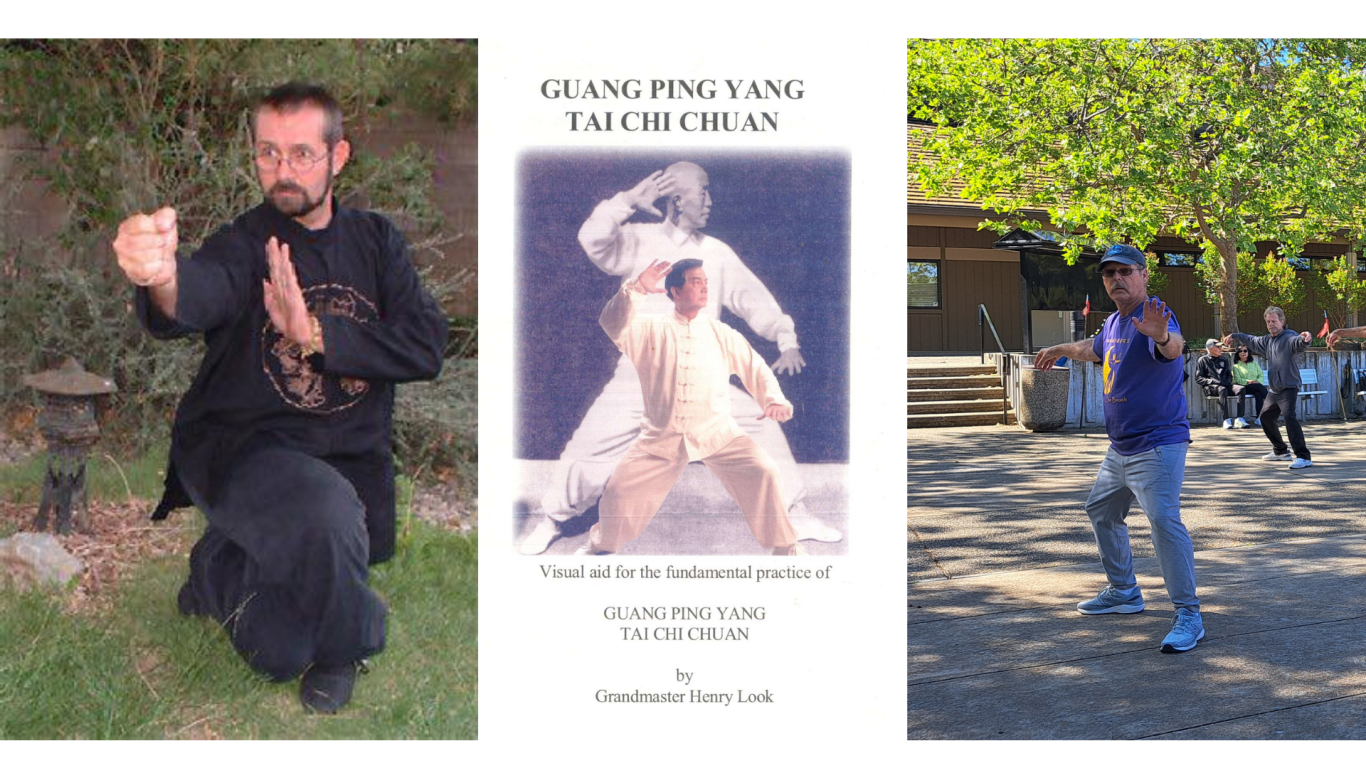
Guang Ping Village Yang Taijiquan
Kuo Lien-Ying's Unique Offering to the World
Kuo Lien-Ying was a general in the Guomindang army and later a national assembly member. Born in Inner Mongolia, Kuo was a martial arts genius who studied Zhaquan with Li Lin and became an expert in this style of Muslim Long Fist. Later he learned the Chinese internal martial arts from various luminaries. He learned Chen style Taijiquan from Chen Fake, Wang Maozhai taught him Wu Quanyou's small frame Taijiquan, and he learned the Guang Ping Yang system from Wang Jiaoyu who studied under Yang Banhou. The Guang Ping 64 Long Form has long, wide open stances, stands upright, extends the limbs farther than most, retains a scissors kick from Chen, and can be used to cultivate refined weight shifting.
While Kuo was a general in the Chinese army and later a national assembly member, he was not known to be particularly upright as an individual. Marilyn Cooper recalled Peter Kwok's description of their flight to the United States in her blog. Kuo had been entrusted with some money to open an herbal medicine shop and spent it all on women, wine, and song. He had Peter Kwok perjure himself in court and testify they had been robbed. Rather than face justice, the two men came to the United States.
Kuo is somewhat famous for defeating Zheng Manqing. He had challenged Zheng from across the country and afterward when Zheng visited the Bay Area they fought. There may have been a miscommunication or perhaps Zheng was over confident. According to Harvey Kurland Kuo did not want to static play push hands and instead went into san shou - beating Zheng handily. In the martial arts world we know of Zheng due to his influence in New York City's hippie community and the popularity of his 37 Short Form. In the wider world, Zheng was known more for his calligraphy and work as a diplomat than as a martial artist. I spent a year learning the 37 Short Form and the Neigong that accompanied his art from Dug Corpolongo's senior student, Rick Clark.
Our line of Guang Ping descends from Henry Look. He taught Guang Ping Yang Taijiquan from the San Francisco Bay Area to Shingle Springs and cities in between. An architect by education and career, Look pursued the Northern Chinese internal martial arts with passion. Many say that Look's Taijiquan is Yiquan in slow motion. I learned Han Family Yiquan from Look's student Nick Domich. From Dug Corpolongo I learned the Beijing 24 Form and started learning the first 32 Short Form that Henry Look put together from the 64 Long Form. The rest of my training in this style has been from Matt Peterson and using video materials from Guang Ping Yang Taijiquan Association instructors. Additionally, I have been receiving distance instruction in Alex Kozma's Qing Era Taiji course. I am a member of the Guang Ping Yang Tai Chi Association and assist with editing the association web site when I can.